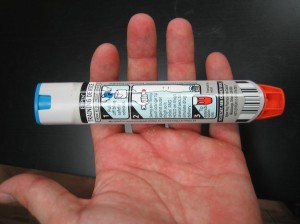Always bear in mind that yellow jackets can strike any time. Once these insects strike, they can inject venom into the skin using their stingers. Yellow jackets do not leave behind their stingers, thus they are capable of delivering more than just a single sting on their victims.
The stings delivered by yellow jackets can caused swelling, redness, pain and itchiness. Always remember that these stings can cause a dangerous allergic response or anaphylactic shock. There are various indications to watch out for whether a particular sting would require immediate emergency care. Most cases of stings from yellow jackets can be easily treated with first aid measures. If you want to learn how to handle insect bites and stings effectively, all you have to do is to register in a first aid course.

What to do for yellow jacket stings
- Initially, you have to rinse off the sting area using warm, soapy water. Once finished washing the area, you have to apply an ice or cold pack over the sting site to help minimize the swelling. In case of persistent pain, you can rub an ice cube over the sting site for about 10 minutes.
- You can minimize the swelling from a yellow jacket sting by applying an aluminum-based deodorant, water solution, meat tenderizer or a thick paste of baking soda. When any of these options are used, you have to use a cotton ball when applying on the sting site. Take note that these solutions can help minimize the swelling and even neutralize the venom. As for the itchiness, you can use Epsom salt or ammonia. If any of these are not available, you can use mud to help with the itchiness from the sting as well as draw out the venom.
- Provide the individual with pain medications such as acetaminophen or ibuprofen to reduce the pain. Make sure that the instructions are followed carefully.
- An oral antihistamine can be taken by the individual to help minimize the itchiness. You can apply hydrocortisone cream on the sting site three times in a day.
- The sting site must be monitored for 24 hours. You can continue to administer basic first aid if the symptoms do not worsen. Always watch out for difficulty swallowing or breathing for two hours after the sting was sustained. Observe for excessive swelling in the legs and arms as well as dizziness or fainting. Call for emergency assistance if any of these severe symptoms manifest. This can indicate an onset of an anaphylactic shock.
Important considerations to bear in mind
The signs of an anaphylactic shock typically manifest within 10-20 minutes after a sting from a yellow jacket was sustained, but it can take up to 20 hours for any of the signs to occur.
Take note that the stings can increase in redness within the initial 24 hours but this does not indicate that the site is infected.
If an individual who has been stung by a yellow jacket and develops an allergic response, he/she must have epinephrine or an EpiPen at all times that can be used to deliver a shot in case stung by the insect.
